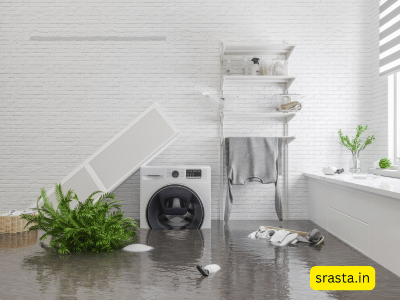Refinishing Hardwood Floors in Kitchens: Managing Moisture and Wear

Hardwood floors bring warmth and elegance to any kitchen, but they are also exposed to heavy foot traffic, spills, and fluctuating moisture levels. Over time, these factors can cause wear and damage, making refinishing an essential maintenance task. This guide explores how to refinish hardwood floors in kitchens while managing moisture and wear effectively.
Why Refinishing is Necessary
Kitchens are high-impact areas where hardwood floors face:
- Frequent Spills – Water and food spills can cause staining and warping.
- Heavy Foot Traffic – Daily use leads to scratches and dullness.
- Temperature and Humidity Changes – Fluctuations cause expansion and contraction, leading to cracks or gaps.
Refinishing restores the floor’s beauty, provides a protective seal, and prolongs its lifespan.
Steps to Refinish Hardwood Floors in Kitchens
1. Assess the Condition
Before refinishing, determine whether your floors need a full sanding or just a light touch-up. If deep scratches, stains, or warping are present, a complete sanding and refinishing process is required.
2. Prepare the Area
- Remove furniture and appliances.
- Cover cabinets and countertops to protect them from dust.
- Clean the floor thoroughly to remove debris and grease.
3. Choose the Right Finish
Since kitchens are prone to moisture, selecting the right finish is crucial. Consider:
- Oil-Based Polyurethane – Provides a durable, long-lasting finish but takes longer to dry.
- Water-Based Polyurethane – Dries faster and has lower VOCs but may require more coats.
- Hardwax Oils – Offer a natural look but need regular maintenance.
4. Sand the Floor
Use a drum or orbital sander to remove old finishes and smooth out imperfections. Start with coarse-grit sandpaper and progress to finer grits for a polished surface.
5. Apply the Finish
- Apply the chosen finish with a brush or roller in thin, even coats.
- Allow adequate drying time between coats.
- Lightly sand between coats for a smooth finish.
6. Cure and Maintain
- Allow the finish to cure for at least 24-72 hours before replacing furniture.
- Use rugs in high-traffic areas.
- Wipe up spills immediately to prevent water damage.
Tips to Protect Kitchen Hardwood Floors
- Use Mats and Rugs – Place mats near sinks and stoves to prevent water and grease damage.
- Control Humidity – Maintain indoor humidity levels between 35-55% to prevent expansion and contraction.
- Regular Cleaning – Sweep or vacuum regularly and use a damp (not wet) mop for cleaning.
- Furniture Pads – Prevent scratches by using pads under chair and table legs.
Conclusion
Refinishing hardwood floors in kitchens is a valuable investment that enhances both durability and aesthetics. By managing moisture and wear effectively, you can maintain the beauty of your kitchen flooring for years to come. With proper refinishing techniques and regular care, your hardwood floors will continue to provide a timeless and resilient foundation for your kitchen space.






